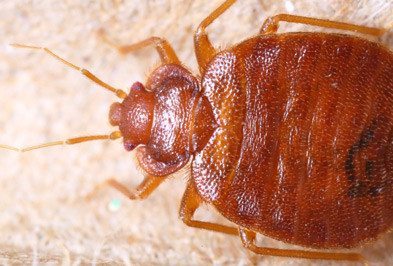Discovering the Science Behind Bed Pest Heat Treatments as a Lasting Pest Administration Strategy
In the world of pest administration, the pursuit for sustainable and reliable remedies remains a continuous pursuit. One such technique that has gotten traction in recent years is making use of heat treatments to deal with bed bug invasions. By using the science behind thermal death factors for these persistent pests, warm treatments offer an appealing alternative to conventional chemical-based approaches. The ins and outs of just how heat successfully removes bed pests and the broader ramifications for lasting parasite monitoring practices make this a topic worth checking out additionally.
Bed Bug Heat Treatment Process

Thermal Death Point for Bed Pests
Subjecting bed insects to elevated temperature levels beyond their thermal resistance array is essential for achieving effective removal in heat treatment processes. By getting to and keeping temperature levels over the thermal death point for bed bugs, pest management professionals can guarantee thorough removal of bed insect populations, including hard-to-reach areas where chemical therapies might be less effective. Understanding the thermal death factor for bed pests is necessary for carrying out successful heat treatment strategies and achieving lasting bug administration results.
Advantages of Heat Treatments
Having established the crucial thermal death factor for bed insects, it is essential to now discover the considerable advantages that heat therapies supply in properly getting rid of these durable pests. Warmth treatments existing several vital advantages when compared to typical chemical methods. Among the main advantages is that heat can pass through deep into crevices and fractures where bed pests conceal, guaranteeing that also the most hard-to-reach locations are heated up to dangerous temperatures. This detailed approach not only eliminates live insects yet also targets bed insect eggs, preventing future invasions.
Additionally, warm therapies are safe and eco pleasant, making them a lasting pest management technique. Unlike chemical pesticides, heat treatments do not leave damaging residues that can present dangers to human health and wellness or the atmosphere. This element is especially crucial in delicate atmospheres such as healthcare facilities, institutions, and suburbs where chemical use may not be desirable.
Additionally, heat therapies have a high success price in getting rid of bed insect invasions in a single treatment, lowering the demand for numerous sees and decreasing interruption to residents. This effectiveness not only conserves time and cash however also provides assurance to those taking care of bed insect problems.
Performance of Warmth Treatment

Warm therapies have the included advantage of eliminating bed pest eggs, which are often immune to typical chemical treatments. On the whole, the efficiency of heat treatments in eliminating bed bug problems makes them a sustainable and reputable bug monitoring approach.
Lasting Parasite Monitoring Advantages
Executing lasting bug management additional info practices supplies long-term benefits for both the setting and public health. By utilizing techniques such as heat therapies for parasite control, we can lower the dependence on dangerous chemical pesticides that can have adverse results on communities and human health - exterminator near me. Sustainable pest management approaches aid in preserving biodiversity by targeting certain parasites without damaging non-target organisms, therefore preserving a well balanced community
Moreover, lasting parasite administration methods add to the total health and wellness and health of the public. By decreasing exposure to harmful chemicals used in typical bug control methods, warm therapies give a safer alternative read review for pest monitoring in household, commercial, and public areas. This decrease in chemical usage likewise aids in stopping chemical residues from contaminating air, water, and soil, protecting environmental high quality.
Final Thought
In conclusion, bed insect warmth treatments have actually been revealed to be a sustainable and effective parasite administration method. The thermal death point for bed insects makes them prone to warm therapies, which have many benefits over conventional chemical therapies. The effectiveness of warm therapies in removing bed pest infestations while minimizing environmental effect highlights the possibility of this approach as a lasting service for insect control.
The bed insect warm treatment process entails elevating the temperature level within ravaged locations to a level that effectively eliminates bed insects and their eggs. By reaching and keeping temperatures above the thermal death factor for bed insects, bug administration experts can guarantee detailed removal of bed pest populations, consisting of hard-to-reach locations where chemical treatments may be much less efficient. One of the main advantages is that warm can pass through deep right into gaps and cracks where bed bugs hide, ensuring that even the most hard-to-reach locations are heated up to lethal temperatures. Unlike chemical therapies that might leave behind resistant populations, warmth find out treatments supply a ecologically friendly and non-toxic solution that can penetrate deep right into furniture, wall surfaces, and other hard-to-reach locations where bed bugs hide.
The thermal death point for bed bugs makes them prone to warmth treatments, which have various advantages over conventional chemical therapies.